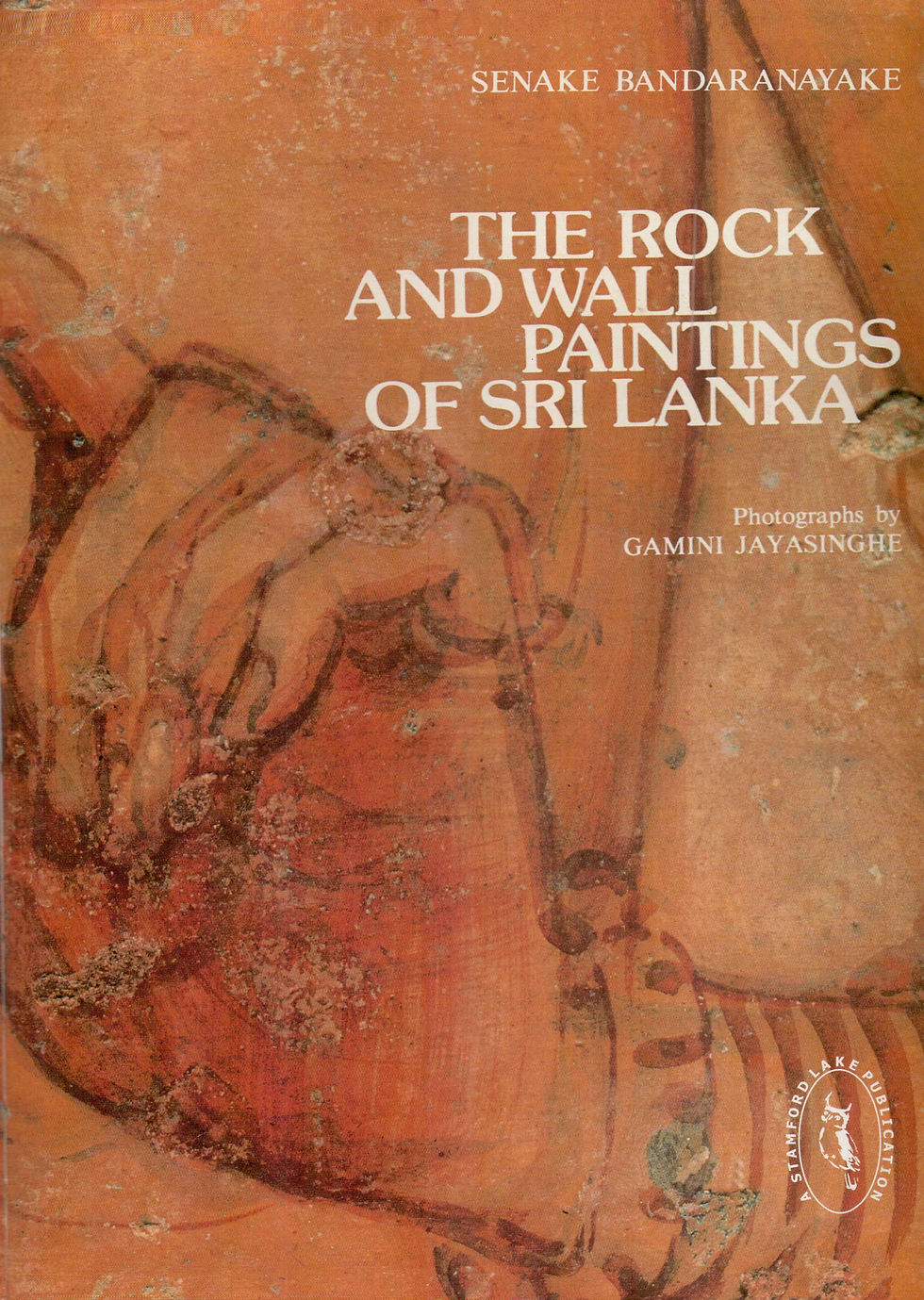THE ROCK AND WALL IPAINTINGS OF SRI LANKA
- ADMIN
- Nov 6, 2021
- 3 min read
Updated: Jul 5, 2023
SENAKE BANDARANAYAKE WITH PHOTOGRAPHS BY GAMINI JAYASINGHE
Prehistoric Art 07
Early Buddhist Rock Monasteries 11
Classic and Late Classic Styles 13
The Gampola and Kotte periods 15
The Kandyan and Southern Schools 17
Transitional Styles of the Modem period 19
Context and Method 22
The Art of Sigiriya 26
The Boulder-Garden Paintings 31
Cave-Shrines of the Anuradhapura Period 34
Relic-Chamber Paintings 73
Polonnaruva Murals 79
LATE PERIOD MURALS
'Impressionism' and 'Idealism' 106
Origins of the Post-Classic Style 109
The Central Kandyan Tradition 112
The Dambulla Cycle 153
Provincial Kandyan Schools 161
Evolution of the Southern Tradition 201
Southern Styles of the 19th Century 204
NOTES 281
ABBREVIATIONS 285
SELECT BIBLIOGRAPHY 285
ACKNOWLEDGEMENTS 289
LIST OF ILLUSTRATIONS 290
INDEX 295
AFTERWORD 2006
ADDITIONS TO THE SELECT BIBLIOGRAPHY
Sri Lanka has a long history of rock and wall painting extending from at least the last few centuries BC to the early 20th century. Fragmentary remains of early painting are known from a number of ancient archaeological sites, while a great cycle of 18th and 19th century murals is found in many urban and rural temples and monasteries. The early paintings, fragmentary and incomplete though they are, give us vivid and complex images of a distant historical epoch. The later paintings - some of them painted almost within living memory - constitute one of the richest and most substantial expressions of Sri Lankan pictorial art in its final period of efflorescence. They give us access to an imaginative world of the recent past in a way that is not easily paralleled by any other form of documentation.
Modem interest in Sri Lankan rock and wall paintings began in the late 19th century. Although there have been several books and articles published on the subject since, this study is the first to present an overview of the entire tradition from its early historical origins to its contemporary traditional manifestations. It brings together almost all the available material belonging to the Early and Middle Historical periods and selected studies of the Kandyan and Southern schools of the later epoch. The analytical and descriptive text is accompanied by photographs and line-drawings selected to illustrate the thematic range, compositional methods and stylistic variety displayed in these paintings as well ad their historical evolution and functional context. Looked at in a regional perspective, the Sri Lankan murals take their place in a broad spectrum of South and Southeast Asian traditions, best known from the Indian subcontinent for the early period and from Burma and Thailand for the later. At the same time, the specific character and continuity of Sri Lankan art over a period of two millennia give it a distinctive place in the art and art-history of the region.
305 PAGES WITH 272 ILLUSTRATIONS INCLUDING 174 COLOUR PLATES AND 98 BLACK-AND-WHITE PHOTOGRAPHS, LINE DRAWINGS AND MAPS
Jacket illustrations. Front:Lady attendant
accompanying Madri Devi, wife of Vess ant ar a (detail). Vessantara Jataka, Kumaramahavihara, Kumarakanda, Dodanduva. Late 1880's. Back: Colossal painted door with fretwork panels (detail). Lankatilaka Temple, Handassa. 18th century.
Senake Bandaranayake is Emeritus Professor of Archaeology at the University of Kelaniya. He is the author or editor of a number of books on the archaeology and culture of Sri Lanka, among them Sinhalese Monastic Architecture (1974); Sri Lanka- lsland Civilisation (1977); Sigiriya: Excavations and Research (1984); The Settlement Archaeology of the Sigiriya-Dambulla Region (1989); Sri Lanka and the Silk Road of the Sea (1990; repr.2003); The Heritage of Asia and Oceania (1993); Ivan Peries: Paintings 1938-88 (1996); and Sigiriya: City, Palace and Royal Gardens (1998; repr.2003). Prof. Bandaranayake is best known for his excavations and research at Sigiriya, over a period of nearly two decades, and has worked and lectured widely at various universities in Asia, Europe and America. His interest in traditional and contemporary art goes back to the 1960s when he was Associate Editor of the UNESCO-WCOTP series, Man Through His Art. He was the founding Director of the Postgraduate Institute of Archaeology in Colombo, Vice-Chancellor of the University of Kelaniya, and served as Sri Lanka's Ambassador to France and UNESCO and High Commissioner in India.
Gamini Jayasinghe is a freelance photographer and film-maker who has been involved in the photographic documentation of Sri Lankan rock and wall paintings since 1965, and has become one of the leading specialists in this field. He began his professional career as a film editor in the Government Film Unit. Later, he became Manager, Foreign Productions, in the State Film Corporation, from which post he resigned in 1980 to take on a four-year commission to document temple murals for the Lever Cultural Conservation Trust, a collection now deposited in the National Archives in Colombo. He has worked on a number of documentary and feature films as photo-director, cameraman and editor. His photographs have appeared regularly in Sri Lankan and international journals and magazines and he has illustrated a number of books. Gamini Jayasinghe lives at Waradala, Kotadeniyawa.
ISBN -955-1131-10-X
Published by
Stamford Lake (Pvt) Ltd Pannipitiya, Sri Lanka E-mail: stamford@eureka.lk Distributed by
Lake House Bookshop Colombo, Sri Lanka



Comments